

Chemistry. Dioxins In Food Chain Linked To Breastfeeding Ills. Exposure to dioxins during pregnancy harms the cells in rapidly-changing breast tissue, which may explain why some women have trouble breastfeeding or don’t produce enough milk, according to a University of Rochester Medical Center study.

Researchers believe their findings, although only demonstrated in mice at this point, begin to address an area of health that impacts millions of women but has received little attention in the laboratory, said corresponding author B. Paige Lawrence, Ph.D., associate professor of Environmental Medicine and of Microbiology and Immunology at URMC. “Estimates are that three to six million mothers worldwide are either unable to initiate breastfeeding or are unable to produce enough milk to nourish their infants,” Lawrence said. “But the cause of this problem is unclear, though it has been suggested that environmental contaminants might play a role. Dioxins are generated mostly by the incineration of municipal and medical waste, especially certain plastics. Why you shouldn't buy, sell, or borrow a second hand Medela Swing pump. In recent Twitter discussions with some fellow breastfeeding nerds (and I mean that lovingly..) some confusion has arisen about whether or not the very popular Medela Swing Breastpump is suitable for sharing/ selling on/ buying second hand.
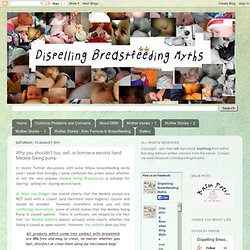
At least one blogger has stated clearly that the Medela pumps are NOT built with a 'closed' (and therefore more hygienic) system and should be avoided. However, elsewhere online you will find conflicting information, some of which states that the Medela Swing Pump IS 'closed' system. There is confusion, not helped by the fact that the Medela website doesn't actually state clearly whether the Swing is closed or open system. Never mind what people believe—how can we change what they do? A chat with Robert Cialdini. When it comes to energy, policymakers are often confronted with human behavior that seems irrational, unpredictable, or unmanageable.
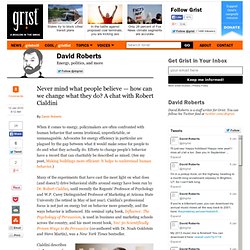
Advocates for energy efficiency in particular are plagued by the gap between what it would make sense for people to do and what they actually do. Efforts to change people’s behavior have a record that can charitably be described as mixed. (See my post, Making buildings more efficient: It helps to understand human behavior.) Many of the experiments that have cast the most light on what does (and doesn’t) drive behavioral shifts around energy have been run by Dr.
Robert Cialdini, until recently the Regents’ Professor of Psychology and W.P. Robert Cialdini. Reciprocity: people will repay favors. He consults for a variety of organizations, exploring how these mechanisms can be used to produce positive results. Q. A. Q. A. Q. A. Wendy's Breastfeeding and Medication Site. The Upledger Institute. Breastfeeding a Baby with Down Syndrome (pdf) Complementary and Alternative Medicine in Breastfeeding Therapy - iBreastfeeding.com. By Nikki Lee, RN, MS, IBCLC, CCE, CIMI, CST (Appl.
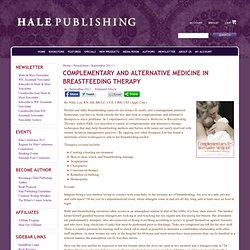
Cert.) Mother and baby breastfeeding issues do not always fit neatly into a management protocol. Sometimes you have to think outside the box and look at complementary and alternative therapies to solve problems. In Complementary and Alternative Medicine in Breastfeeding Therapy, author Nikki Lee describes a variety of complementary and alternative therapy techniques that may help breastfeeding mothers and babies with issues not easily resolved with current lactation management protocol. Hand expression. An observational study of associations among maternal fluids during parturition, neonatal output, and breastfed newborn weight loss. Milk sharing: from private practice to public pursuit. In many settings breast milk and breastfeeding have been undervalued, and the nutritional merits and safety of infant formula exaggerated (for an in depth discussion of this issue see Hausman [6]).
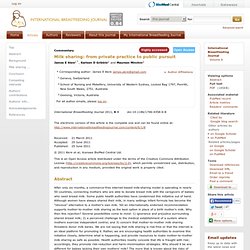
The result: infant formula is considered the "obvious" alternative to a mother's own milk. However, the international infant feeding recommendation in place for the past 25 years describes a different nutritional hierarchy for babies who are not fed at the breast but for whom breast milk remains the food of choice: expressed breast milk provided by their own mothers, followed by breast milk from a wet-nurse, or from a breast-milk bank [7]. So, if an internationally endorsed recommendation already exists for mother-to-mother milk sharing as the best alternative to a birth mother's own milk, why the rejection of this internet-based model?
Several possibilities come to mind. InfantRisk Center. New Hampshire Breastfeeding Task Force- Promoting, Protecting and Supporting Breastfeeding in New Hampshire. Prechewed infant food may transmit AIDS virus. NEW YORK Tue Jul 21, 2009 10:16pm IST NEW YORK (Reuters Health) - In a report released Monday, US researchers say they have "compelling evidence" that three infants became infected with HIV, the virus that causes AIDS, by eating food prechewed by their HIV-infected caregivers.
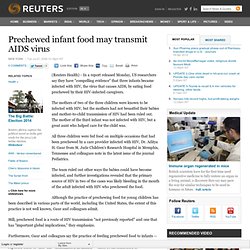
The mothers of two of the three children were known to be infected with HIV, but the mothers had not breastfed their babies and mother-to-child transmission of HIV had been ruled out. The mother of the third infant was not infected with HIV, but a great aunt who helped care for the child was. All three children were fed food on multiple occasions that had been prechewed by a care provider infected with HIV, Dr. Aditya H. The team ruled out other ways the babies could have become infected, and further investigations revealed that the primary source of HIV in two of the cases was likely bleeding in the mouth of the adult infected with HIV who prechewed the food. SOURCE: Pediatrics, August 2009.